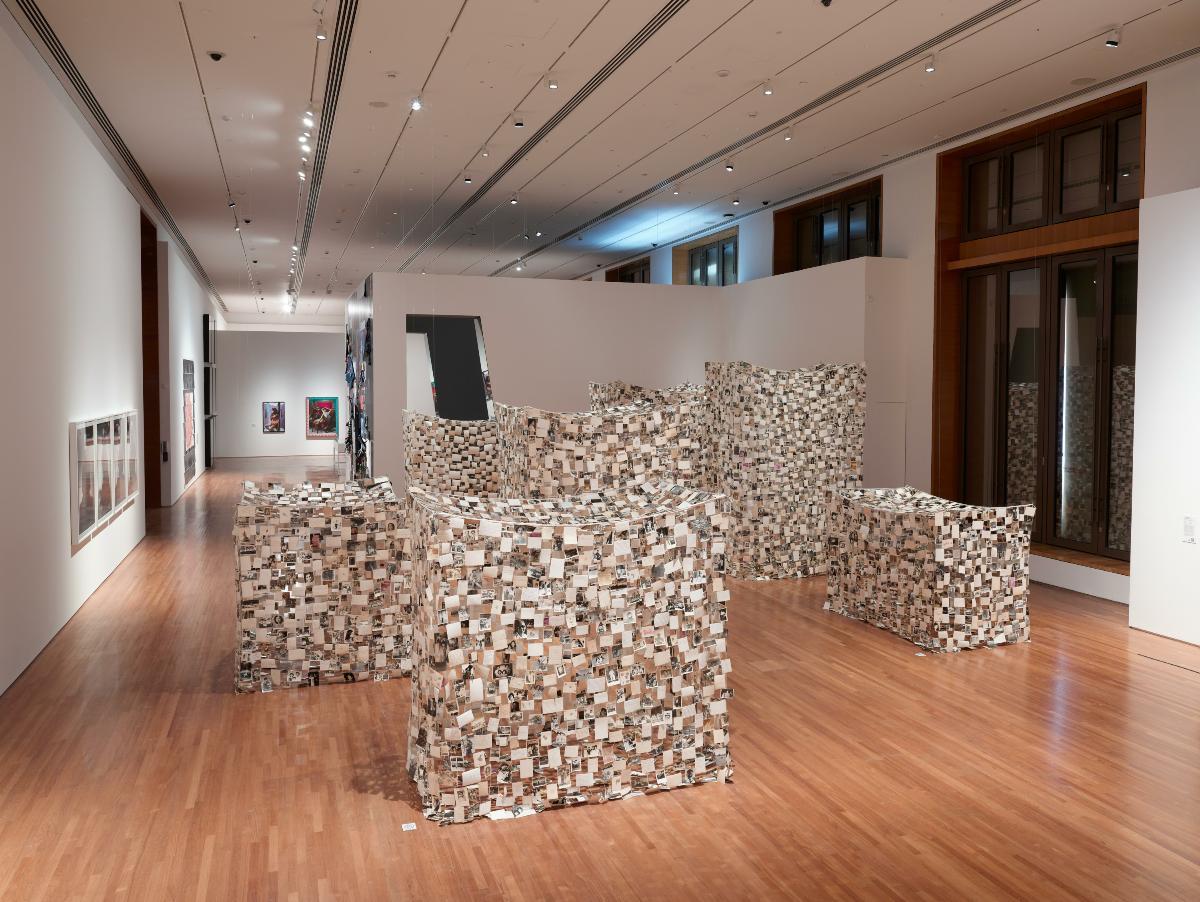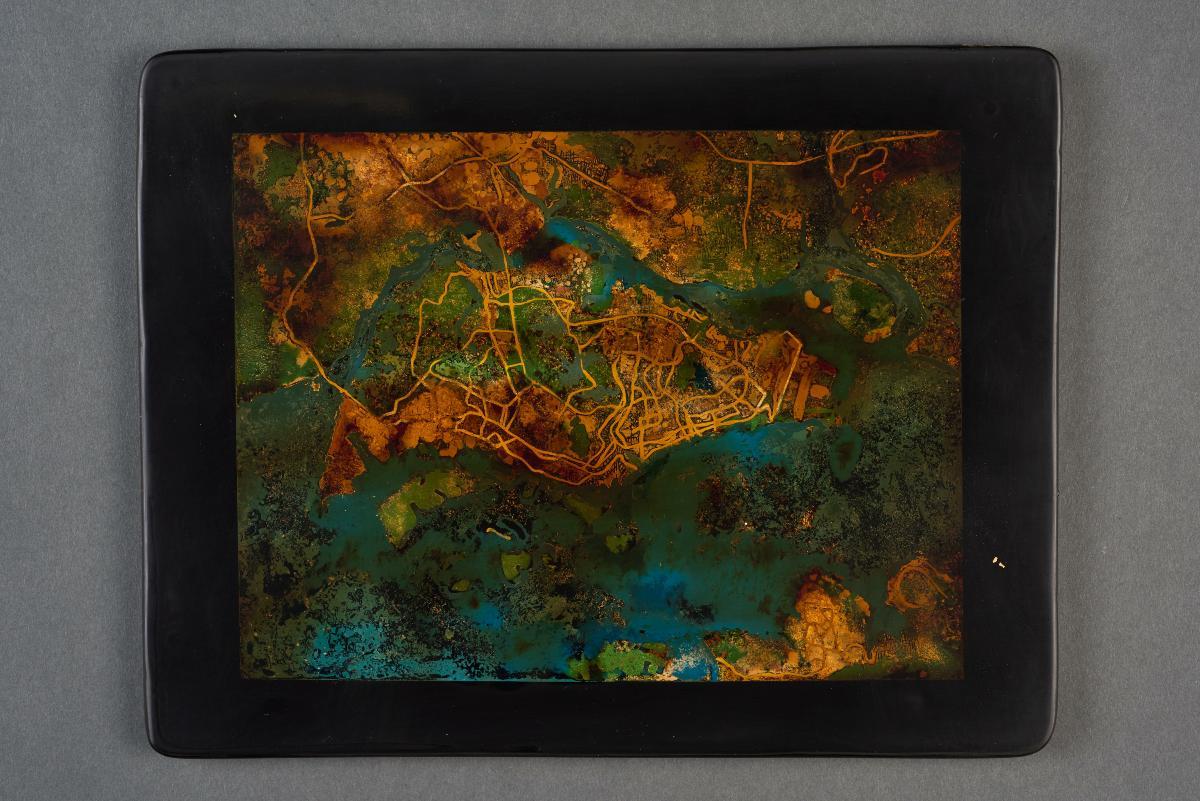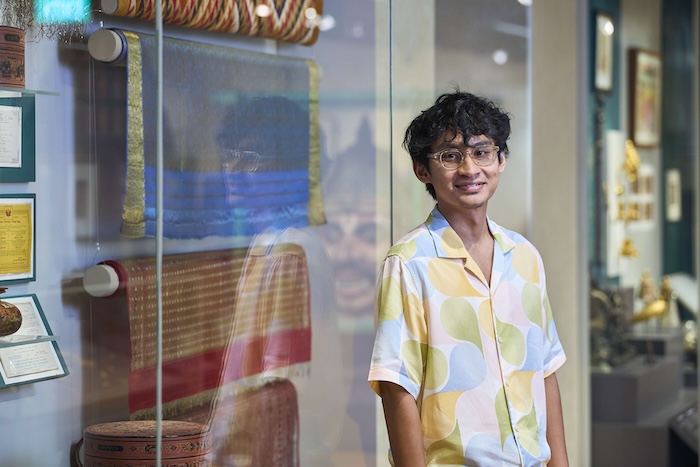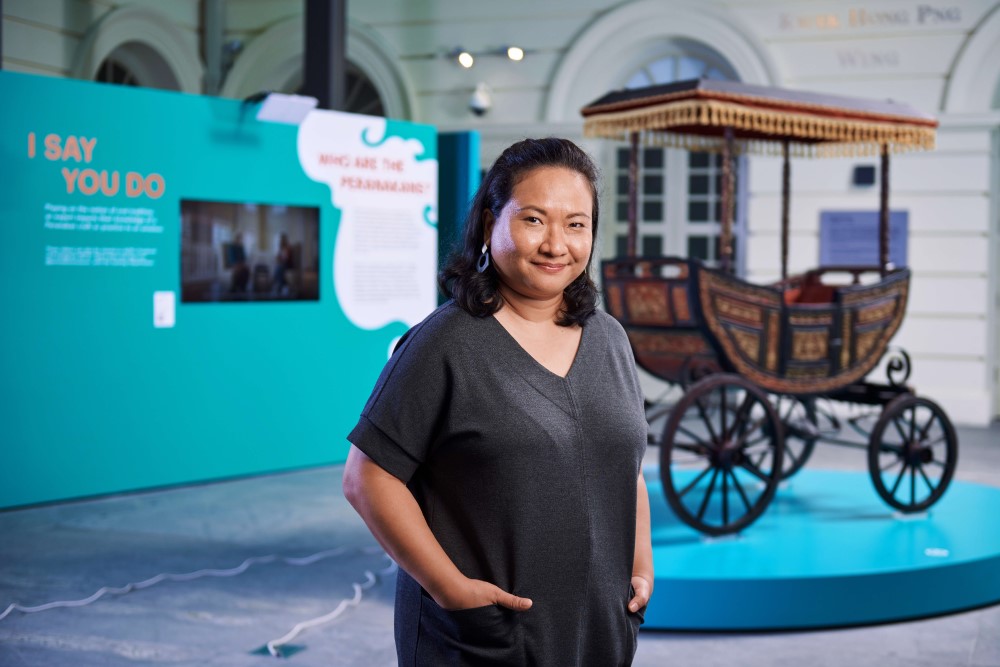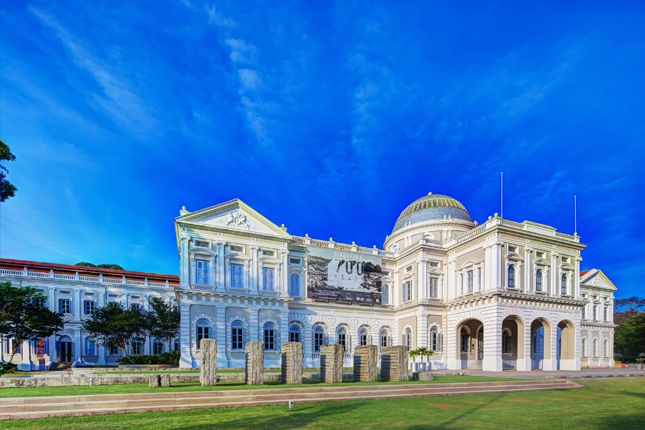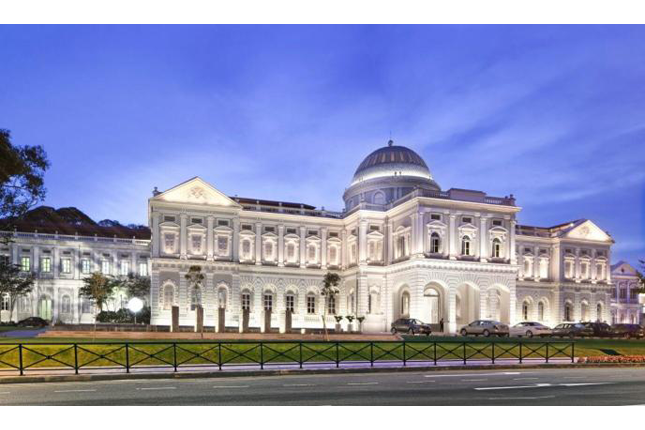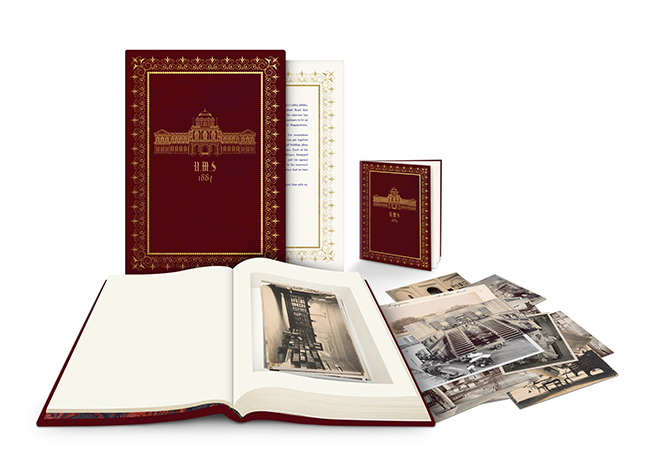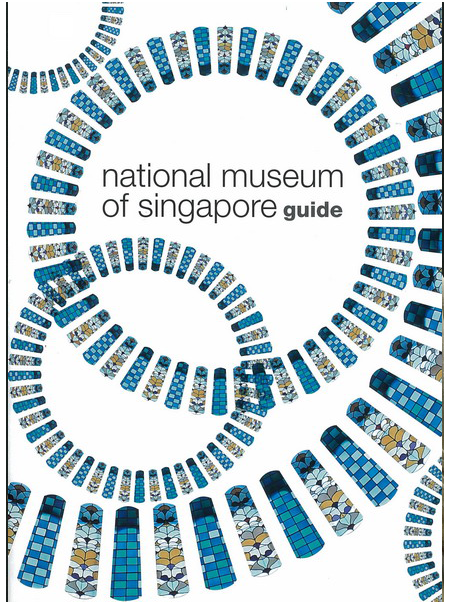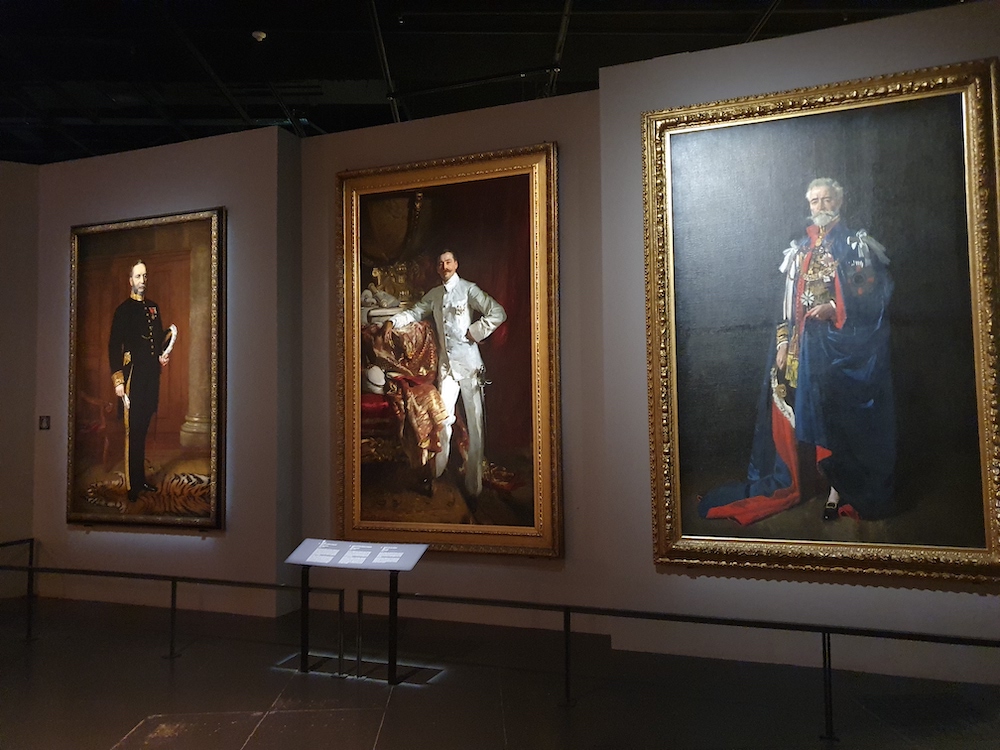TL;DR
Chung May Khuen shares with MUSE SG the impetus for the museum’s shift in focus to include the present with the Collecting Contemporary Singapore initiative, the change in her perception of the role of technology in museums, and her hopes for the future of NMS.
MUSE SG January 2023
Read the full MUSE SG Jan 2023 Issue
Presently director of the National Museum of Singapore (NMS), Chung May Khuen began her career as an assistant curator at the Asian Civilisations Museum in 1997 before joining NMS as a curator in 2003. After a stint at the Heritage Conservation Centre, she rejoined NMS in 2019. Among the exhibitions she has curated are In the Mood for Cheongsam: Modernity and Singapore Women (2012) and The Wedding Dress: 200 Years of Wedding Fashion from the Victoria and Albert Museum, London (2012).
Hi, May Khuen! Please tell us what led you to join the National Museum of Singapore.
I studied history at the National University of Singapore. However, I never did a module on Singapore history as I resisted studying a subject I felt was too close to home; you know, how the grass is usually greener on the other side? I was more interested in learning about other peoples’ cultures. I joined the Asian Civilisations Museum as an assistant curator in 1994. There, I looked after the South Asia collection and was involved in the exhibition Krishna: The Blue God, as well as international travelling exhibitions such as Eternal Egypt: Treasures from the British Museum. I also curated the permanent South Asia galleries which opened in 2003.
That same year, an opportunity came up to join the Singapore History Museum [predecessor of today’s National Museum of Singapore]. I jumped at the chance because I was attracted by the museum’s plans to open a new fashion gallery. I’ve always loved fabrics as they are a key component of material culture. I find fashion to be a very underrated aspect of Singapore culture, even though much can be said about the identity of a people through the lens of what they wear. I am particularly interested in the independence of women expressed through clothing in the 1950s and ’60s.
How has the National Museum changed over the years since you joined?
I joined the museum in 2003 when it was undergoing a major shift—we spent a lot of time thinking about what the museum should be. A survey conducted earlier revealed that a significant number of people in Singapore thought of museums as generally dull and did not enjoy visiting them. In response, Lee Chor Lin, the museum director at the time, charted an entirely new direction: she was convinced that the museum should no longer be a traditional space focusing merely on the historical development of Singapore, but move towards towards themes exploring social history and popular culture. The museum would also become a lifestyle destination for all segments of society.

Thereafter, the museum began delving into more relatable topics like fashion, food, film and photography, with galleries dedicated to these themes set up in the former Singapore History Gallery. In doing so, the museum expanded its reach to different demographics. We wanted people to visit the museum not just for its exhibitions, but also for other activities. In line with this, the museum launched the Cinémathèque film programmes and a restaurant opened on the premises in 2004.
After Chor Lin, my predecessor Angelita [Teo] took over as director. Angelita was fascinated by tech and how it could be used to enhance the museum experience. At first, I was rather resistant to this idea as my curatorial training taught me to firstly showcase the object. I felt that new technologies would be a distraction. But over time I began to understand how tech could add value to the work of museums. Thus, when the museum underwent another revamp to prepare for Singapore’s golden jubilee celebrations in 2015, we employed the use of multimedia to complement the narratives.
Angelita also introduced contemporary art to the museum by partnering cutting-edge artists such as [Japanese digital art collective] teamLab to offer fresh ways of presenting local narratives. Besides that, we also launched Digimuse, an initiative to engage the tech sector to encourage creative experimentation in cultural spaces. Digimuse has since supported a wide range of prototype projects including new experiences in immersive reality and dynamic conversations enabled by artificial intelligence.
What is your take on the role of technology in museums today?
Tech is a fact of modern life, particularly with the onset of the COVID-19 pandemic. It has opened new doors and changed the way we present content in our museums. The visitor experience begins online even before one steps into the actual exhibition space. This prelude may even take the form of an online game to pique the visitor’s interest first.

With technology, we can also solve the issue of showcasing collections that cannot be presented permanently. Take, for instance, the William Farquhar Collection of Natural History Drawings: only 40–50 illustrations from the collection’s over 400 drawings can be displayed at any one time, and only for two years at most due to the fragile condition of the artefacts. What about the rest? To get around the problem, the museum commissioned teamLab to create a multimedia experience based on the collection. Visitors can now enjoy The Story of the Forest , which features almost 70 digitally rendered works from the Farquhar collection, at the museum’s Glass Rotunda.
Collecting Contemporary Singapore is a relatively new initiative where the museum’s collection has expanded to include contemporary artefacts that reflect our current times. Why did NMS adopt this new collecting strategy?
This strategy is inspired by the ‘rapid response collecting’ concept where museums expand their collections to include artefacts relating to major moments in recent history or are relevant o contemporary events. For us, the COVID-19 pandemic was the most recent catalyst. The last time we faced a similar situation was the SARS outbreak in Singapore that occurred in March 2003, not long after I started work as a curator at NMS. I remember Chor Lin quickly getting into action, working with Singapore Press Holdings to commission photography at Tan Tock Seng Hospital—the epicentre of the outbreak.
With that experience, I knew we had to act swiftly when the COVID-19 pandemic broke out. At the same time, we realised that the initiative must not be just a one-off response but should continue even after—and so Collecting Contemporary Singapore began.
This represents a broadening of our focus from the past towards the present. For instance, the exhibition, Off/On: Everyday Technology that Changed Our Lives, 1970s –2000s , which ended its run in October 2022, continued the principle of featuring a topic that’s important to us in daily life. There was also some continuity from Picturing the Pandemic: A Visual Record of Covid-19 in Singapore held in 2021 in terms of our reliance on technology. The latter was the museum’s first exhibition based on the Collecting Contemporary Singapore initiative.

We felt that Off/On was successful in sparking interesting conversations; seeing families of different age groups, even three-generational ones, coming to view the exhibition was really nice. It was a very tactile exhibition—for example, we recreated the experience of using a pager, now a veritable relic, to send messages, and visitors could touch the typewriters displayed.
How do you perceive the role of the museum today?
I see the museum playing a critical role today as a social space enjoyed by people for what it is; for some, just because they want a place to hang out. But I also see it as a space for people seeking solitude, where they can escape from the stressors of daily life or the harsh reality of the ongoing pandemic. I think the latter is something we can better appreciate today after battling the worst of the pandemic.
Since 2006, the museum has been making concerted efforts to move away from traditional and elitist ideals of what makes a museum, to becoming a more relevant space for the community—a people’s museum where everyone is welcomed, and with no barriers for all strata of society. I know some people in the past didn’t dare step into the colonial-era building that houses NMS because they just found it too intimidating.
One of the ways we are making the museum more accessible is through Collecting Contemporary Singapore, which signals that we are interested in the ‘now’, issues that resonate with the people today. We want to be the bridge between the past and the present.
Your background is in fashion. If the National Museum was an outfit, what would it be and why?
Oh, it would be the cheongsam, for sure—a classic! It emerged at the turn of the 20th century, and the modern cheongsam has survived over a hundred years. In the 1950s and ‘60s when women wanted to express their modern identity, the shape of the cheongsam took on a cosmopolitan flavour with a nipped-in waist for a more figure-hugging silhouette. The cheongsam symbolises resilience and modernity—and it is sexy.
The cheongsam has reflected different identities in different eras, but it always has a role to play. Similarly, this is my wish for the National Museum: to stay relevant for different audiences. Having a progressive mindset and constantly evolving according to the times will ensure that the grande dame will never go out of fashion.

Cheongsam with gold sequinned dragons such as this one were a popular evening outfit among Singapore women in the late 1950s and 1960s. The dragon signifies strength, power and good luck in Chinese mythology. By the 1950s, the wearing of black cheongsam by women in Singapore had become more widespread due to both modernisation and Westernisation. Black —previously considered inappropriate and taboo because of its symbolic associations with death and tragedy—became a staple in women’s wardrobes. A black cheongsam was considered extremely versatile as it was suitable for both day and evening functions when matched with the right accessories.






